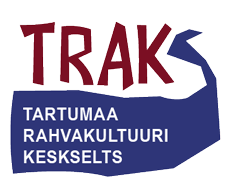Lõõ, lõõkku, tšii, tšiikku!
(Swinging Song)
Leanne Barbo and choir
In Votian
Lõõ, lõõkku, tšii, tšiikku!
La-ka vaatan lõõkkuani,
missä puussa lõõkku tehtü?
Eb-ko lie lepässä tehtü,
paju-puussa painutõltu –
leppä abraz murtumaazõ,
paju abraz painumaazõ,
kahtši abraz katkõmaazõ.
Varod omad vahtõradzõd,
tšültšipuud on tšünnäpuizõd,
aluspuud anõõpajuizõd.
Tšülää poisid, velvüeni,
elkaa rehgaa lõõkuttagaa,
raskaassi rahsuttagaa,
ett’en maalõ lankõizi,
rohoo pääle rohsahtaizi!
Eb õõ velvüd lõõkuu alla,
eb-k’ õõ tširjav tšiikuu alla,
eb õõ maalta võttajõita,
roojassa ülentäjeitä.
In English
Swing, oh, swing!
Let me see my swing,
What wood is it made from?
It isn’t made from alder,
Bent from willow—
Alder snaps easily,
Willow bends easily,
Birch breaks easily.
Swing bars are from maple,
Side beams are from elm,
Lower beams are from creeping willow.
Village boys, dear brothers,
Don’t swing too far,
Don’t shake too strong,
I wouldn’t want to fall,
Go down on the grass!
I have no dear brother under the swing,
No beautiful one under the swing,
No one to pick me up from the ground,
Lift from the mud.
Young people on the swing are wondering whether the swing is strong enough to carry them. It is—the swing was made of fine timber. The singer cautions people against pushing the swing too far, because the maiden on the swing has no brother to catch her, if she happened to fall. Such large village swings which carried up to 20 people were known in central and western Ingria. On these swings, the singing may have been done so that there was a separate lead singer on either swing board, rather than just alternating between the lead singer and the choir. Or the singers on one swing board sung the lead part and those on the other board repeated the line. A note added to the original variant of the song, by Anna Ivanovna, says: It’s a summer song, to be sung on any day.
Swinging is part of spring and summer traditions and used to be a well-loved pastime in Ingria, but also in Finland and Estonia. Meeting on the swing was important because it gave the young people an opportunity to learn new songs. Väinö Salminen was told both on the Kurkola (Kurgolovo) and the Soikino peninsula that during major holidays even Estonian youth came to the swings by boat, so that they could to listen to and learn new songs. Salminen noted that it would be difficult to imagine a swing square without a group of girls singing and men rumbling (Salminen 1929b: 63).
The melody here is one of the swinging tunes written down from Votians, and is very similar to swinging melodies in North Estonia, especially Virumaa County. The opening line of the songs is also similar; for example, the swinging songs in Virumaa start as follows: kii, kiike, laa, laike...
T M Mati (Axel August Borenius-Lähteenkorva 1877, SKVR IV3 4682, Launis 1910: 12, nr 33).
T Anna Ivanovna, Peen-Rudja (August Ahlquist 1854–1855, SKVR IV3 4651).





